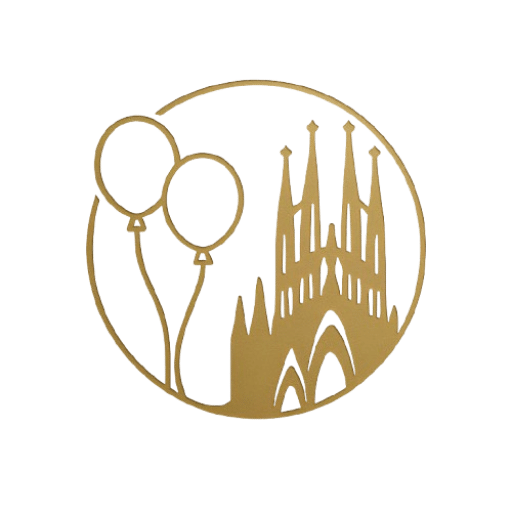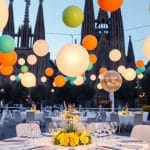Balloon sculpting is an engaging art form that combines creativity and skill, transforming simple balloons into intricate designs. This comprehensive guide, titled Balloon Sculpting 101: From Simple to Complex Designs, will help you navigate through the basics and advanced techniques of this captivating craft.Whether you're a beginner curious about balloon twisting or an experienced artist looking to refine your skills, this article will provide valuable insights and step-by-step instructions to elevate your balloon art.

What is balloon sculpting?
Balloon sculpting, also known as balloon twisting, involves manipulating balloons into various shapes and designs. This art form has evolved from simple party entertainment into a recognized artistic expression. Artists use a variety of techniques to create everything from balloon animals to complex sculptures.The appeal of balloon sculpting lies in its versatility and accessibility. Anyone can learn the basics with practice, and it provides a fun way to entertain at events, parties, and gatherings. Balloon sculpting also allows for personal flair and creativity, encouraging artists to develop their unique styles.Moreover, the materials required for balloon sculpting are minimal. All you need are balloons, a pump for inflation, and a little imagination. With dedication and practice, you can create stunning balloon displays that captivate audiences.What are the basic techniques in balloon twisting?
To get started with balloon sculpting, it's essential to familiarize yourself with the fundamental techniques involved. Some of the basic techniques include:- Twists: These are the building blocks of balloon sculptures. Learning how to twist balloons effectively is crucial.
- Pinch twists: This technique allows you to create more complex shapes and add stability to your designs.
- Locking twists: A method to secure your balloon twists, helping maintain the structure of your creations.
- Bubble twists: Creating bubbles of varying sizes that can be used as components in your sculptures.
How do you create simple balloon animals?
Creating simple balloon animals is a fantastic way to start your balloon sculpting adventure. Follow these steps for a classic balloon dog:- Inflate a long balloon, leaving about a 6-inch tail uninflated.
- Twist a 3-inch bubble for the dog's nose.
- Make two more 3-inch bubbles for the ears, twisting them together.
- Twist a 5-inch bubble for the neck and another for the body.
- Finally, create two 3-inch legs by twisting bubbles and attach them to the body.
What advanced techniques can be used in balloon sculpting?
Once you’ve mastered the basic techniques, it's time to explore advanced methods that can elevate your balloon art. Some of these techniques include:- Yo-yo twists: A dynamic twist that adds movement to your sculptures.
- Suction cup twists: Used to attach balloons to surfaces or other balloons.
- Weaving: A technique that creates intricate patterns and designs in your sculptures.
- Clustering: Combining multiple balloons to form larger, more complex shapes.
How has balloon sculpting evolved over the years?
Balloon sculpting has undergone significant changes since its inception. In the 1970s and 1980s, balloon twisting was primarily an entertainment activity for children’s parties. However, as artists began to experiment with more intricate designs, the art form gained recognition as a legitimate creative medium.Today, balloon sculpting encompasses a wide range of styles and techniques. Artists now create complex sculptures for various events, showcasing their skills and pushing the boundaries of traditional balloon art. From thematic displays to large-scale installations, balloon sculptors have transformed the landscape of artistic expression.Moreover, the internet has played a crucial role in the evolution of balloon sculpting. Online tutorials and social media platforms have made it easier for artists to share their work and connect with others in the community. This accessibility has led to an increase in creativity and innovation within the art form.As a result, balloon art is no longer limited to simple designs; it has become a recognized and respected art form celebrated worldwide. Artists are continually exploring new techniques and ideas, paving the way for future developments in balloon sculpting.What tools are essential for balloon sculpting?
To succeed in balloon sculpting, having the right tools is essential. Key tools include:- Balloon pump: A hand or foot pump helps inflate balloons quickly and easily.
- Balloon scissors: Useful for cutting off excess balloon length and ensuring clean edges.
- Quality balloons: Invest in high-quality balloons that are durable and easy to work with.
- Markers: Used to add details and facial features to your balloon animals.
How to overcome common challenges in balloon twisting?
New balloon sculptors often encounter challenges along the way. Here are some tips to help you overcome these obstacles:- Untwisting balloons: If your balloon animal keeps untwisting, ensure you’re making secure twists and using locking techniques.
- Popping balloons: Handle balloons gently during inflation and twisting to avoid accidents.
- Time management: Practice making sculptures within a time limit to improve your speed and efficiency.
Why does my balloon animal keep untwisting?
A balloon animal may untwist due to improper twisting techniques or insufficient tension in the twists. Ensure that you are using secure locking twists and maintaining consistent pressure while creating your sculptures. Practice makes perfect, so don't hesitate to redo a piece until you find the right technique that works for you.Additionally, consider using pinch twists strategically to stabilize your designs. These can help hold various parts of your balloon animal together, reducing the chances of untwisting.How to make a balloon lock twist?
To create a lock twist, follow these steps:- Twist two bubbles together, ensuring they are of equal size.
- Take the ends of both bubbles and twist them together tightly.
- Pull the twisted section slightly to create a secure lock.
What is balloon twisting called?
Balloon twisting is often referred to as balloon sculpting or balloon modeling. This art form encompasses a variety of techniques used to create intricate shapes and designs from balloons. Regardless of the name, the goal remains the same: to transform ordinary balloons into imaginative works of art.What do you call a person who makes balloon animals?
A person who makes balloon animals is commonly known as a balloon artist or balloon twister. These individuals often entertain at events, parties, and festivals, showcasing their skills in balloon sculpting. Many balloon artists develop their unique style and techniques, contributing to the diverse world of balloon art.Menu
- What is balloon sculpting?
- What are the basic techniques in balloon twisting?
- How do you create simple balloon animals?
- What advanced techniques can be used in balloon sculpting?
- How has balloon sculpting evolved over the years?
- What tools are essential for balloon sculpting?
- How to overcome common challenges in balloon twisting?
- Related questions about balloon sculpting techniques
Para ampliar tus conocimientos, a continuación te presentamos un video titulado "Balloon sculpting 101: from simple to complex designs" que te guiará desde las creaciones más sencillas hasta las más elaboradas en el arte de esculpir globos.

Please note that all prices displayed on this website are for reference only. Final pricing may vary depending on the specific decoration requirements, materials, and event details. Contact us for a personalized quote tailored to your unique celebration!



Deja una respuesta